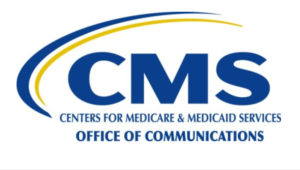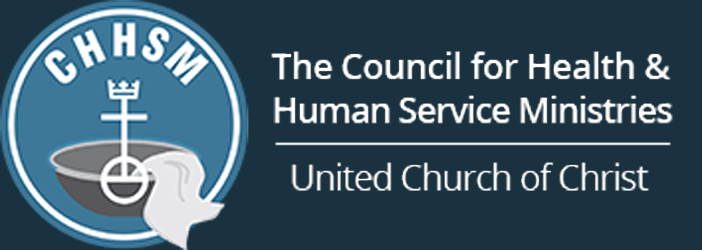FACT SHEET: Medicare Issues Fiscal Year 2019 Payment and Policy Changes for Skilled Nursing Facilities
Reprinted from the Centers for Medicare and Medicaid Services:
 Overview
Overview
On July 31, 2018, the Centers for Medicare & Medicaid Services (CMS) issued a final rule [CMS-1696-F] outlining Fiscal Year (FY) 2019 Medicare payment updates and quality program changes for skilled nursing facilities (SNFs).
This fact sheet discusses three major provisions of the final rule: the changes to the case-mix classification system used under the SNF Prospective Payment System (PPS), the SNF Value-Based Purchasing Program (VBP), and the SNF Quality Reporting Program (QRP). The major FY 2019 policies and other issues discussed in the final rule are summarized below.
The final rule includes policies that continue a commitment to shift Medicare payments from volume to value, with continued implementation of the SNF VBP and SNF QRP.
Additionally, effective October 1, 2019, CMS will be using a new case-mix model, the Patient-Driven Payment Model, which focuses on the patient’s condition and resulting care needs rather than on the amount of care provided in order to determine Medicare payment. The final rule also modernizes Medicare through innovation in SNF, meaningful quality measure reporting, reduced paperwork, and reduced administrative costs.
The final rule can be downloaded from the Federal Register at: https://www.federalregister.gov/public-inspection.
Modernizing the SNF PPS Case-mix Classification System
In May 2017, CMS released an Advanced Notice of Proposed Rulemaking (ANPRM) which outlined a new case-mix model, called the Resident Classification System, Version I (RCS-I), that it was considering to replace the existing Resource Utilization Group, Version IV (RUG-IV) case-mix model, used to classify residents in a covered Part A stay into payment groups under the SNF PPS. Since the ANPRM, CMS continued stakeholder engagement efforts to identify and address the concerns and questions raised by commenters. As a result, we have made significant changes to the RCS-I model, which resulted in renaming this model to the SNF Patient-Driven Payment Model (PDPM).
Promotion Patient Driven Value-Based Care:
The new model is designed to improve the incentives to treat the needs of the whole patient, instead of focusing on the volume of services the patient receives, which requires substantial paperwork to track over time. CMS also significantly reduced the overall complexity of the PDPM, as compared to RUG-IV or RCS-I, based on stakeholder feedback. The new case-mix classification system (the PDPM) will be effective October 1, 2019 to allow time for education and training of SNFs to prepare for this new model. The improved SNF PPS case-mix classification system moves Medicare towards a more value-based, unified post-acute care payment system that puts unique care needs of patients first while also significantly reducing administrative burden associated with the SNF PPS.
The new case-mix model, PDPM, focuses on clinically relevant factors, rather than volume-based service for determining Medicare payment, by using ICD-10 diagnosis codes and other patient characteristics as the basis for patient classification. Further, PDPM adjusts Medicare payments based on each aspect of a resident’s care, most notably for Non-Therapy Ancillaries (NTAs), which are items and services not related to the provision of therapy such as drugs and medical supplies, thereby more accurately addressing costs associated with medically complex patients. Finally, PDPM adjusts the SNF per diem payments to reflect varying costs throughout the stay and incorporate safeguards against potential financial incentives to ensure that beneficiaries receive care consistent with their unique needs and goals. In addition to these finalized changes, we also finalized a combined limit on group and concurrent therapy of 25 percent, as we believe that this best ensures that SNF patients will continue to receive the highest caliber of therapy that is best attuned to their individual needs and goals. We will also continue to work with stakeholders to consider potential modifications to this finalized policy for future rulemaking, including whether to adjust the combined limit of 25 percent for concurrent and group therapy to ensure sufficient flexibility for therapists without compromising beneficiary care.
Consistent with stakeholder comments encouraging a more simple payment model, the SNF PDPM also reflects an approximately 80 percent reduction in the number of payment group combinations compared to the RCS-I. Additionally, it reflects updates to the data used as the basis for our analyses, to ensure that the results reflect the current resident population. PDPM, as compared to RCS-I, also makes greater use of certain standardized items for payment calculations, such as in using function items also used for the SNF QRP. Finally, PDPM simplifies complicated paperwork requirements for performing patient assessments by significantly reducing reporting burden (approximately $2.0 billion over 10 years), helping to create greater contact between health care professionals and their patients.
Information on training and education resources and opportunities associated with implementing the PDPM will be available on the CMS website at http://www.cms.gov/Medicare/Medicare-Fee-for-Service-Payment/SNFPPS/index.html
SNF Quality Reporting Program (QRP) Background:
The SNF QRP is authorized by section 1888(e)(6) of the Social Security Act and applies to freestanding SNFs, SNFs affiliated with acute care facilities, and swing-bed rural hospitals except for critical access hospitals. Under the SNF QRP, SNFs that fail to submit the required quality data to CMS will be subject to a 2 percentage point reduction to the otherwise applicable annual market basket percentage update with respect to that fiscal year.
Meaningful Measures: CMS reviewed the SNF QRP’s measure set in accordance with the Meaningful Measures Initiative to identify how to move the SNF QRP forward in the least burdensome manner possible while continuing to incentivize improvement in the quality of care provided to patients. Specifically, the goals of the SNF QRP and the measures used in the program cover most of the Meaningful Measures Initiative priorities, including making care safer, strengthening person and family engagement, promoting coordination of care, promoting effective prevention and treatment, and making care affordable.
Currently, all measures adopted in the SNF QRP meet the requirements and are in satisfaction of the Improving Medicare Post-Acute Care Transformation of 2014 (IMPACT) Act. There were no new measures proposed for the SNF QRP.
Finalized Changes: In this final rule, we are adopting an additional factor to consider when evaluating measures for removal from the SNF QRP measure set. This factor takes into account costs that are associated with a measure and weighs them again the benefit of its continued use in the program. CMS will also publicly display the four SNF QRP assessment-based quality measures, and increase the number of years of data used to display two claims-based SNF QRP measures, Discharge to the Community and Medicare Spending per Beneficiary, from 1 year to 2 years.
SNF Value-Based Purchasing Program (VBP)
Background: As required by law, beginning October 1, 2018, the SNF VBP Program will apply either positive or negative incentive payments to services furnished by skilled nursing facilities based on their performance on the program’s readmissions measure. The single claims-based all cause 30-day hospital readmissions measure in the SNF VBP aims to improve individual outcomes through rewarding providers that take steps to limit the readmission of their patients to a hospital. This single measure does not require SNFs to report information in addition to the information they already submit as part of their claims because CMS uses existing Medicare claims information to calculate the measure.
Finalized Changes: The FY 2019 final rule discusses updates to policies, including performance and baseline periods for FY 2021 SNF VBP Program year, an adjustment to the SNF VBP scoring methodology, and an Extraordinary Circumstances Exception (ECE) policy.
Payment Rates Changes Under SNF Prospective Payment System (PPS)
Based on changes contained within this final rule, CMS estimates that the FY 2019 aggregate impact will be an increase of $820 million in Medicare payments to SNFs, resulting from the FY 2019 SNF market basket update required to be 2.4 percent by the Bipartisan Budget Act of 2018. Absent the application of this statutory requirement, the FY 2019 market basket update factor would have been 2.0 percent which reflects the SNF FY 2019 market basket index of 2.8 percent, reduced by the multifactor productivity adjustment of 0.8 percent. This 2.0 percent update would have resulted in an estimated aggregate increase of $670 million in Medicare payments to SNFs.
For more information:
The FY 2019 SNF PPS final rule displayed on July 31, 2018, at the Federal Register’s Public Inspection Desk and will be available under “Special Filings,” at http://www.federalregister.gov/inspection.aspx.
Additional information is available at:
- SNF PPS: http://www.cms.gov/Medicare/Medicare-Fee-for-Service-Payment/SNFPPS/index.html
- SNF QRP: https://www.cms.gov/Medicare/Quality-Initiatives-Patient-Assessment-Instruments/NursingHomeQualityInits/Skilled-Nursing-Facility-Quality-Reporting-Program/SNF-Quality-Reporting-Program-IMPACT-Act-2014.html
Join Our Mailing LIst
"*" indicates required fields
